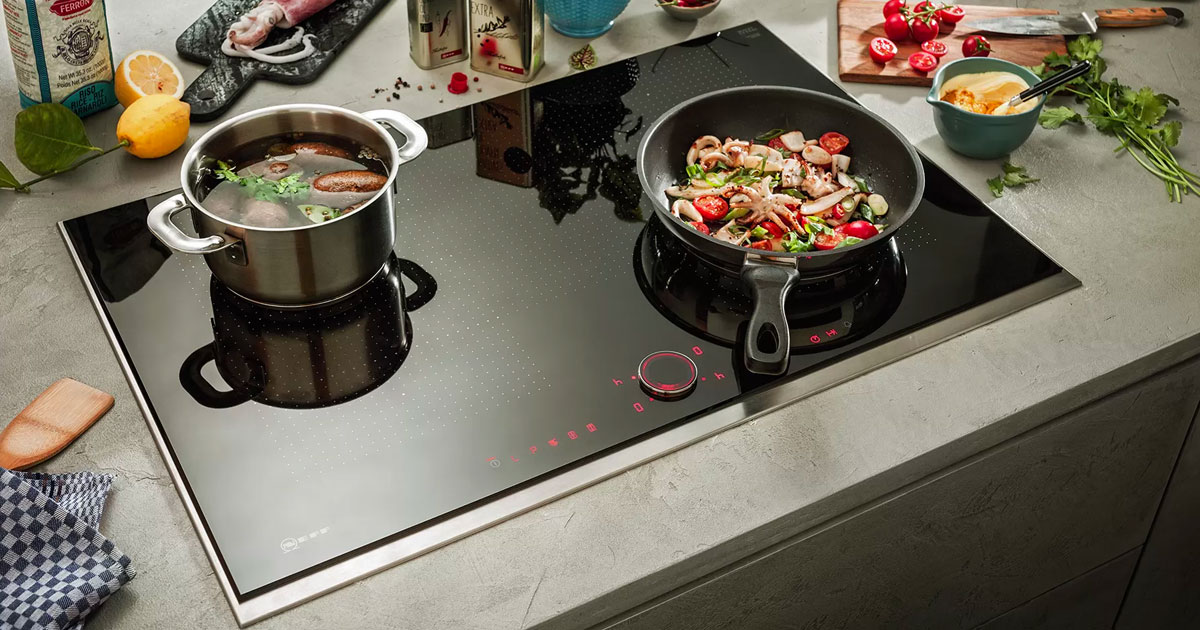Induction vs Gas Stove: A Comparison of Features
I. Introduction to Induction and Gas Stove
:max_bytes(150000):strip_icc()/GettyImages-123544650-0fa09a2f05a24cca8374bf9c6adb0495.jpg)
A. Overview of Induction and Gas Stove Technologies
Induction and gas stoves are two popular types of kitchen stoves that use different technologies to generate heat for cooking. Induction stoves use magnetic induction to heat the cookware directly, while gas stoves rely on an open flame combustion process.
B. Embracing the Advantages of Each Stove Type
Induction stoves offer precise temperature control, energy efficiency, and a safer cooking experience. Gas stoves provide immediate heat response, versatility in cooking methods, and compatibility with a wide range of cookware.
C. Exploring the Factors to Consider when Choosing Between Induction and Gas
When choosing between induction and gas stoves, consider factors such as cooking needs, available power sources, installation requirements, safety concerns, and personal preferences.
II. Heating Mechanism and Efficiency
A. Induction Stove: Magnetic Induction Technology
- How Induction Stoves Work
Induction stoves use an electromagnetic field to generate heat directly in the cookware. When an induction-compatible pot or pan is placed on the stove, an alternating current creates a magnetic field, which induces electrical currents in the cookware, resulting in heat production.
- Advantages of Induction Stove Efficiency
Induction stoves are highly efficient because they heat the cookware directly, minimizing heat loss. They heat up quickly, offer precise temperature control, and waste less energy compared to other stove types.
B. Gas Stove: Open Flame Combustion
- How Gas Stoves Work
Gas stoves rely on open flame combustion to generate heat. A mixture of gas (usually natural gas or propane) and air is ignited by a pilot light or electric ignition. The flame heats the cookware and surrounding area.
- Advantages of Gas Stove Efficiency
Gas stoves provide immediate heat response, making it easier to control temperature changes during cooking. They also offer a high heat output, making them suitable for high-heat cooking techniques.
III. Heat Control and Temperature Adjustment
A. Induction Stove: Precision and Instantaneous Heat Control
- Adjusting Heat Levels with Induction Stove
Induction stoves offer precise temperature control with instant heat adjustments. The heat can be increased or decreased immediately by adjusting the stove’s controls.
- Quick Response Time for Temperature Changes
Induction stoves have a quick response time when it comes to temperature changes. The heat adjusts instantly when the control is adjusted, providing greater control over cooking processes.
B. Gas Stove: Manual Flame Control
- Adjusting Flame Intensity on a Gas Stove
Gas stoves allow users to manually control the flame intensity by adjusting the gas flow using knobs. The flame can be adjusted to achieve high or low heat levels.
- Controlling Heat with Gas Stove Knobs
Gas stove knobs offer a manual control mechanism for adjusting the heat. Turning the knobs clockwise increases the gas flow and flame size, while turning them counterclockwise reduces the heat.
IV. Safety Considerations
A. Induction Stove: Safety Features and Induction Technology
- Induction Stove Safety Mechanisms
Induction stoves have built-in safety features such as auto-shutoff timers, pan detection sensors, and residual heat indicators. These features help prevent accidents and provide added safety during cooking.
- Reduced Risk of Burns and Fire Hazards
Induction stoves have a lower risk of burns and fire hazards because they do not produce an open flame. The cooktop remains relatively cool, and heat is only generated in the cookware, reducing the risk of accidental burns.
B. Gas Stove: Safety Measures and Flame Control
- Gas Stove Safety Precautions
Gas stoves require proper ventilation to remove any potentially harmful gases. It is important to handle gas appliances with care, ensuring that there are no gas leaks and that the flame is extinguished when not in use.
- Appropriate Ventilation and Fire Safety
Proper ventilation is crucial when using a gas stove to prevent the buildup of gas and the release of harmful fumes. Additionally, fire safety measures should be followed, such as keeping flammable materials away from the stove and using caution when working with an open flame.
V. Installation and Maintenance
A. Induction Stove: Electrical Requirements and Cleaning
- Power Supply and Electrical Setup for Induction Stove
Induction stoves require a dedicated electrical circuit with specific voltage and amperage requirements. Proper electrical installation by a professional electrician is necessary for safe and efficient use.
- Cleaning and Maintenance Tips for Induction Stove
Cleaning an induction stove involves using non-abrasive cleaners and soft cloths to wipe the surface. Avoid using abrasive materials that may scratch the glass top. Regular cleaning and maintenance help prolong the life and appearance of the stove.
VI. Cooking Performance and Versatility
A. Induction Stove: Precise and Efficient Cooking
- Even Heat Distribution on Induction Stove
Induction stoves provide even heat distribution across the entire cooking surface. This allows for precise and consistent cooking results.
- Compatibility with Induction-Ready Cookware
Induction stoves require the use of induction-compatible cookware, which typically has a magnetic bottom. This ensures optimal heat transfer and efficient cooking.
B. Gas Stove: Traditional and Versatile Cooking
- Immediate and Adjustable Flame Heat on Gas Stove
Gas stoves offer immediate heat response, allowing for quick temperature adjustments during cooking. The open flame provides visual cues for heat control.
- Compatibility with Various Cookware Types
Gas stoves can accommodate a wide range of cookware types, including stainless steel, cast iron, and copper. This versatility allows for a variety of cooking techniques.
The choice between induction and gas stoves depends on individual preferences and needs. Induction stoves offer precise heat control, instantaneous temperature changes, and enhanced safety features. Gas stoves provide the ability to control flames manually, traditional cooking experience, and versatility with different cookware. Consider factors such as heating mechanism, heat control, safety, installation, maintenance, and cooking performance when deciding between induction and gas stoves. Choose the stove type that aligns best with your preferences, lifestyle, and cooking requirements to enhance your culinary experience.
